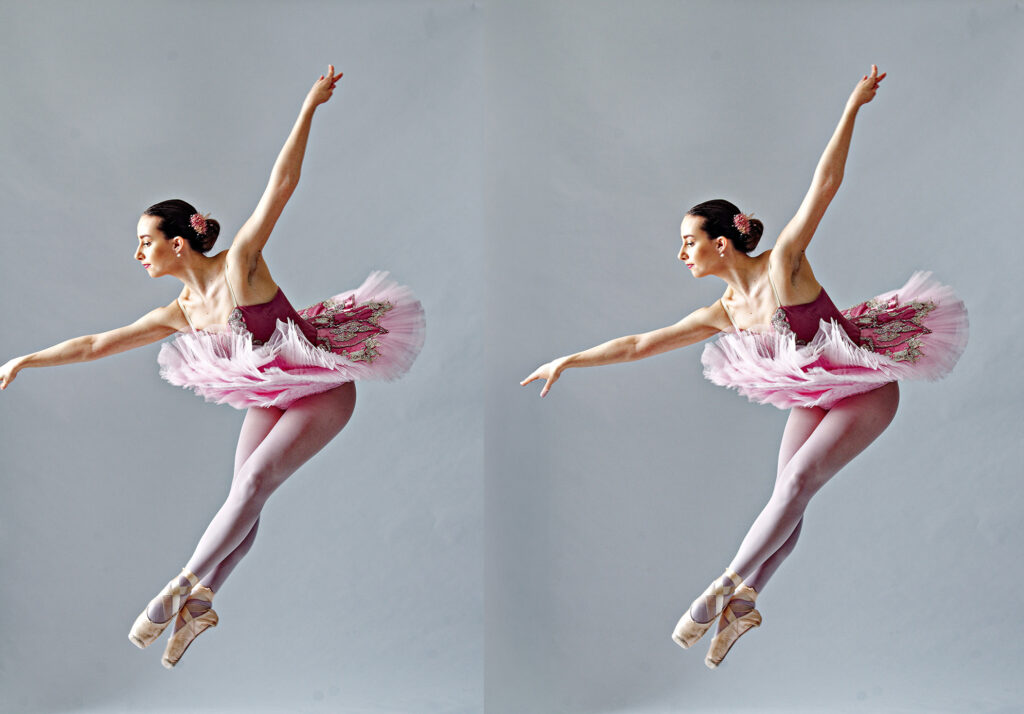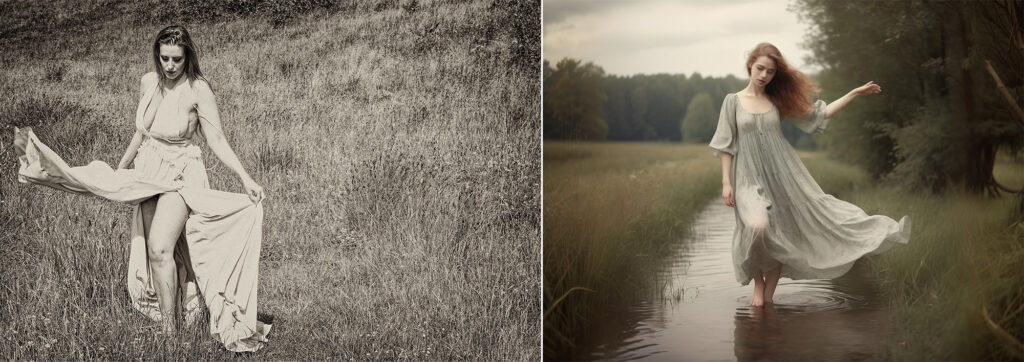
I’ll have lots to say on AI in future postings but for now I want to confine my remarks and thoughts to the types of software that can be used to make and enhance creative assets. There are lots of them about and they are easy to use but how good are they and what is my experience with them?
As a keen photographer my go to program is Photoshop and just lately it’s been touting its AI capabilities and I’ve had cause to use those new capabilities. Take the pair of photographs at the head of this blog. On the left I have a photograph of the ballerina Erica Mulkern taken earlier this year. I was very pleased with this shot but I couldn’t help noticing that part of Erica’s right hand was out of the frame making it less than perfect. The photo of Erica on the right is after I used Photoshop’s creative fill action to make her right hand whole again. It took a couple of iterations to get right but it wasn’t time consuming. Can you tell that the right hand photo has been changed artificially? I suspect not but I know and it doesn’t make me happy. I’m not opposed to tweaking photos, no one is except the very few photographers who believe if it isn’t captured in camera it isn’t a pure photograph. In general I and most photographers will use filters, cropping, changing white balance, using third party filters etc., to achieve a desired result. But in all those cases I’m in charge of where to crop, how strong to make a filter and so on. In the case of Photoshop’s generative fill it’s just a matter of dragging a cropped area and letting it create the fill (half a hand for instance) or specifying in text what you want to see. It feels like some of the creativity is being taken away from the human creator.
But there was worse to come and you can see why in the two “photos” below.

I’m not the kind of photographer who’s just interested in one type of subject. I like to try my hand at many different things although I have an abiding interest in Victorian and Edwardian photography. Recently I’ve been reading and researching the topic of pictorialism in art and photography and decided I’d like to try my hand at reproducing something similar to the likes of Steiglitz or Clarence White. So, I looked up some examples of pictorialist photographs, experimented with using Photoshop layers to achieve the desired result, hired a model, travelled to a suitable location, took several hundred photos, imported them into Photoshop and post processed them to get the look I was aiming for. On the left you can see one of the photos of Arabella made to look something like a pictorialist photo. In other words to get to that photograph took a lot of time and effort and collaboration.
On the right you can see a photograph (or is it?) produced by Openart AI when given the prompt “A barefoot woman in a floaty dress in pictorialist style.” Time to generate this picture? About 30 seconds. This is the first time ever that I’ve been impressed by software purporting to be AI driven. Clearly I’ve not been paying sufficient attention.